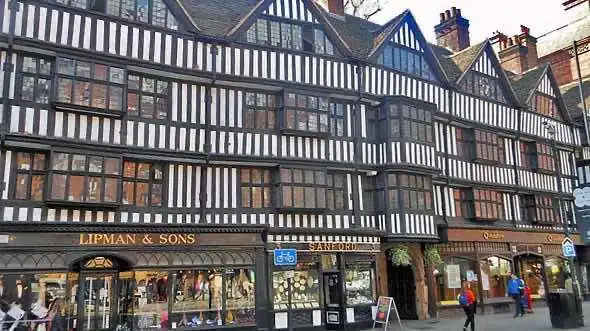 Photo: londondrum.com
Photo: londondrum.comIf you want to see a genuine Tudor building from the days of William Shakespeare then here it is. If you’re old enough to remember when smoking was still good for you then you might remember it decorating the front of an Old Holborn tobacco packet as well.
Staple Inn (or ‘Le Stapled Halle’, to give it its fancy French name) has had a few alterations over the years but it’s still basically the same as Shakespeare would have seen it when he was writing Romeo and Juliet. When he was strolling down here people were still celebrating the defeat of the Spanish Armada and putting up posters of Drake on their bedroom wall.
Local lawyers & The Inns of Court
Its origins go back even further – all the way to 1378 when it doubled up as a motel and market for all the travelling merchants who came to get their wool taxed and weighed before they could be paid.
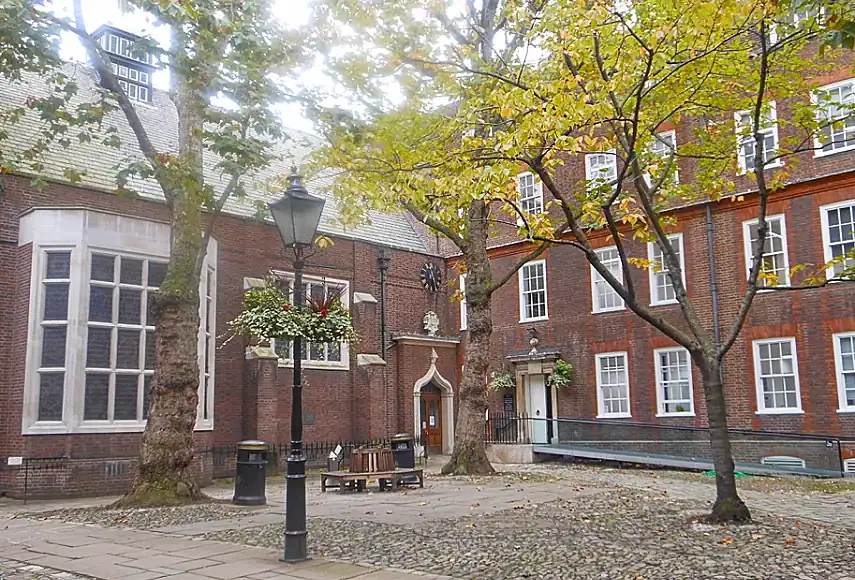 Photo: londondrum.com
Photo: londondrum.comOver the years they started letting out a few of the empty rooms to the local lawyers who were working in the nearby Inns of Court, and by 1580 the Lord Chancellor was hearing legal cases in their magnificent new hall.
Charles Dickens’ The Mystery Of Edwin Drood
The Great Fire of 1666 petered out before reaching its feet but the authorities decided that it still needed saving anyway and covered the front in ‘fireproof plaster’. It was another two hundred years before this unsightly whitewash was chipped away, just in time for Charles Dickens to immortalise it in The Mystery of Edwin Drood.
World War II bombing during the Blitz
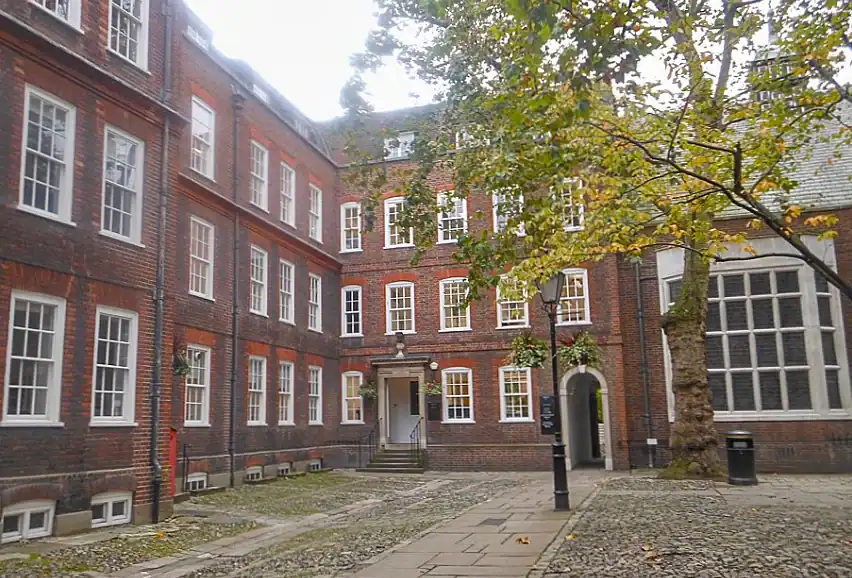 Photo: londondrum.com
Photo: londondrum.com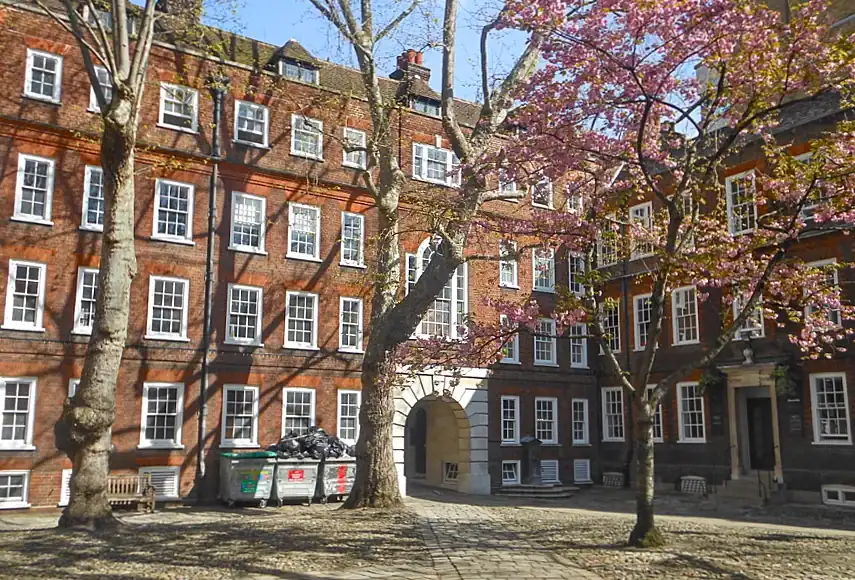 Photo: londondrum.com
Photo: londondrum.comFortunately the building had been stiffened with steel before the Luftwaffe dropped a bomb on it, but when a doodlebug hit the middle of the Great Hall it collapsed the hammerbeam roof. Luckily the stained glass had already been packed away safe and sound in the cellar and they managed to reconstruct the ceiling using some salvaged stones and timbers from the fire. And that’s how we can admire it now… looking a lot older than its seventy years.
If you head through the central arch then you’ll find yourself in a pretty little cobbled courtyard. At the time of writing it’s just me and a few bees, pink blossom on the trees, and some hanging flower baskets dripping with a drink of fresh water.
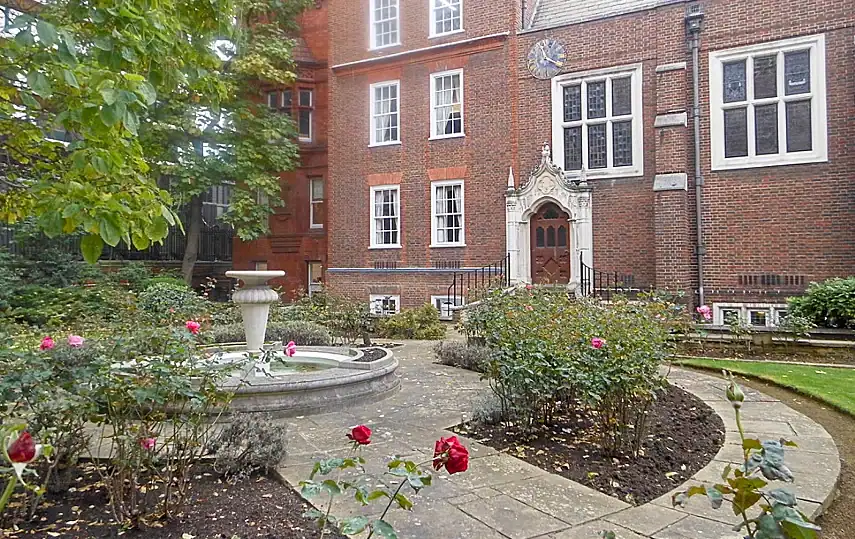 Photo: londondrum.com
Photo: londondrum.comIf you head through the next arch then you’ll find yourself inside the pretty little place that Dickens described in his novel. I’m trying to avoid drawing your attention to that modern-day monstrosity that ruins an entire side of the scene (too late, I just did). Maybe we should invite the Luftwaffe back to erase it from existence. We’ll just call it compensation for what they did in 1944.
I also recommend… If you enjoy this then try Lincoln’s Inn (you can walk it in 4 mins)
How to get to Staple Inn
| Fare zone | Cash | Oyster & Contactless | Travelcard | ||||
|---|---|---|---|---|---|---|---|
| Single fare | Single fare | Daily cap | One day | ||||
| Peak | Off-peak | Peak | Off-peak | Anytime | Off-peak | ||
| Bus (all zones) | n/a | £1.75 | £5.25 | £6 | |||
| Train (zone 1) | £7 | £2.90 | £2.80 | £8.90 | £8.90 | £16.60(zone 1-4) | £16.60(zone 1-6) |
| Train (zone 1-2) | £7 | £3.50 | £2.90 | £8.90 | £8.90 | ||
| Train (zone 1-3) | £7 | £3.80 | £3.10 | £10.50 | £10.50 | ||
| Train (zone 1-4) | £7 | £4.60 | £3.40 | £12.80 | £12.80 | ||
| Train (zone 1-5) | £7 | £5.20 | £3.60 | £15.30 | £15.30 | £23.60(zone 1-6) | |
| Train (zone 1-6) | £7 | £5.80* | £3.80* | £16.30 | £16.30 | ||
| * Journeys between zone 1 and Heathrow are always charged at the peak rate. Prices are correct as of | |||||||
More things to do in Holborn





 Twitter
Twitter Facebook
Facebook Bluesky
Bluesky WhatsApp
WhatsApp Email
Email





